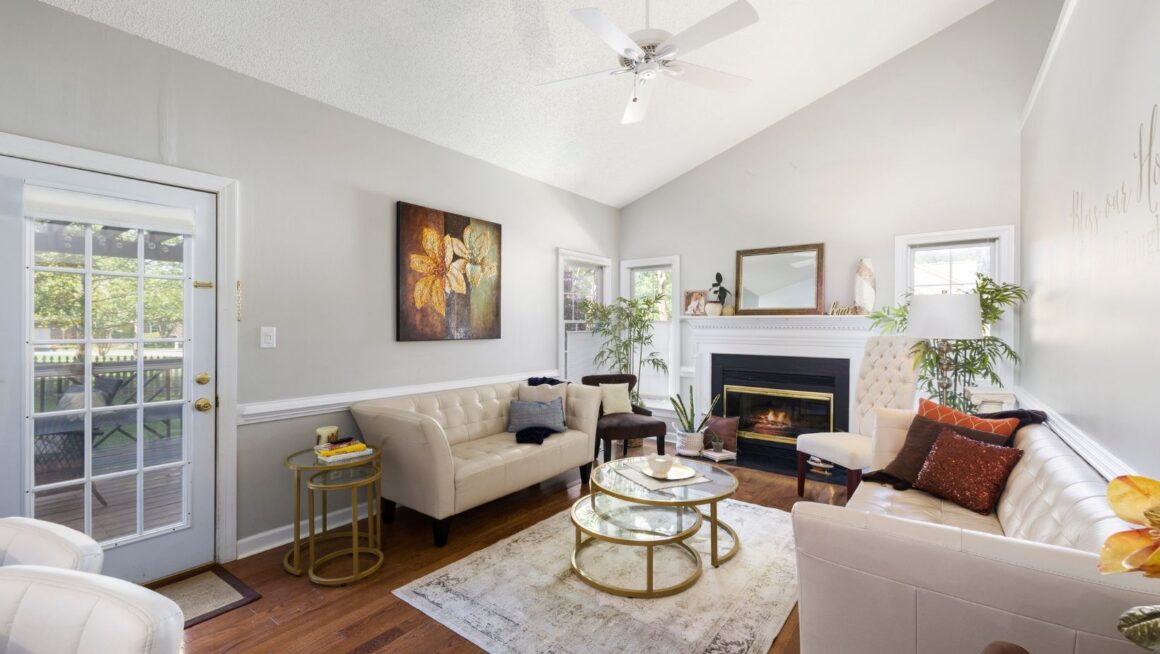For the last decade or more, neutral colours have offered a safe, clean foundation in home design. Beige, grey, and off-white are seen as timeless and easy to work with. They offer flexibility in both style and function, serving as a backdrop that can accommodate seasonal decor changes, various furniture styles, or eclectic art pieces. These tones evoke a sense of order and calm, essential in fast-paced urban lives. Neutral palettes also tend to make spaces feel larger and more open, catering to contemporary design ideals.
But while neutral design offers simplicity and ease, it often lacks the individuality and character many people crave. There’s a growing realisation that while these tones are safe, they can also be impersonal, creating spaces that feel more like a hotel lobby than a lived-in home.
The Appeal of Neutrals
With people spending more time in their homes due to shifts in work-life balance, there’s been a push toward creating spaces that not only look good but also feel deeply personal. Homeowners are now seeing design as a reflection of their identity, experiences, and aspirations.
The rise of personality-driven design reflects a broader cultural trend: individualism and self-expression. It’s not just about owning a beautifully designed home; it’s about curating a space that tells a story. Whether that’s through bold colour choices, unconventional furniture, or a mix of textures and patterns, personal design taps into the essence of who we are.
Why It’s Time to Embrace Bold Choices
Colours Impact Mood and Emotion: Colour psychology plays a significant role in how we feel within a space. While neutral tones provide serenity, they may also evoke feelings of detachment or blandness. Bold, rich colours like deep blues, earthy greens, or warm terracotta can inspire creativity, comfort, or even a sense of adventure. Designing with colour can uplift your mood and transform your energy within a room, making it feel like an extension of yourself. Similarly, textured or parquet flooring can infuse a room with energy and vitality.
Personalisation Reflects Authenticity: One of the central themes behind personality-driven design is authenticity. By moving away from generic neutrals, you can create spaces that reflect their unique tastes and interests. Instead of following trends, personality-driven designs allow individuals to bring their quirks, hobbies, and memories into the home. The result is a living space that feels genuine, lived-in, and personal.

A More Memorable Home Experience: Homes with bold, distinctive designs tend to be more memorable, both for inhabitants and guests. A striking wall colour, a vintage sofa, or a gallery of travel photographs is far more impactful than a plain neutral room. Personality-driven spaces become conversation starters and reflect the vibrancy of life within them. A house with exciting, luxurious floors creates an immediate impression too. Adding depth whilst reflecting your character and taste.
Breaking Away from the “Instagram” Mould: The minimalist, neutral aesthetic has been largely popularised by platforms like Instagram and Pinterest, creating a kind of design monoculture. While these spaces may look picture-perfect, they can lack depth. Homeowners are now embracing a rebellion against this cookie-cutter style by incorporating design elements that feel more real and less curated.
Sustainability and Reuse: Personality-driven design often encourages the reuse and repurposing of unique, vintage, or second-hand items. This not only adds charm and character to the home but also aligns with more sustainable living practices. By choosing items with history or crafting your own, you create a space that’s distinct and environmentally friendly.
From Neutrals to a Personality-Driven Home
Making the switch from neutrals doesn’t have to mean an entire home renovation.
Start Small: Begin with one room or even one wall. Introduce a bold paint colour or patterned wallpaper to create a feature area that reflects your personality.
Layer Textures and Patterns: A variety of fabrics, materials, and prints can add depth and interest to neutral spaces without overwhelming them.
Incorporate Personal Art and Memorabilia: Display collections, family photos, or personal artwork to create an emotional connection within your home.

Use Accent Furniture: Choose a colourful sofa, statement chair, or unique coffee table to introduce a focal point that stands out against a neutral backdrop.
Mix Old with New: Incorporating vintage or repurposed items can make a room feel lived-in and personal, especially when mixed with modern elements.
Final Thoughts
While neutral tones and minimalist designs have served us well, there’s a growing desire for homes that feel more authentic, bold, and full of life. Personality-driven design allows us to infuse our living spaces with the richness of our individual experiences and tastes. As we move into a more expressive and personalised era of interior design, now is the time to embrace spaces that not only look beautiful but truly reflect who we are.


